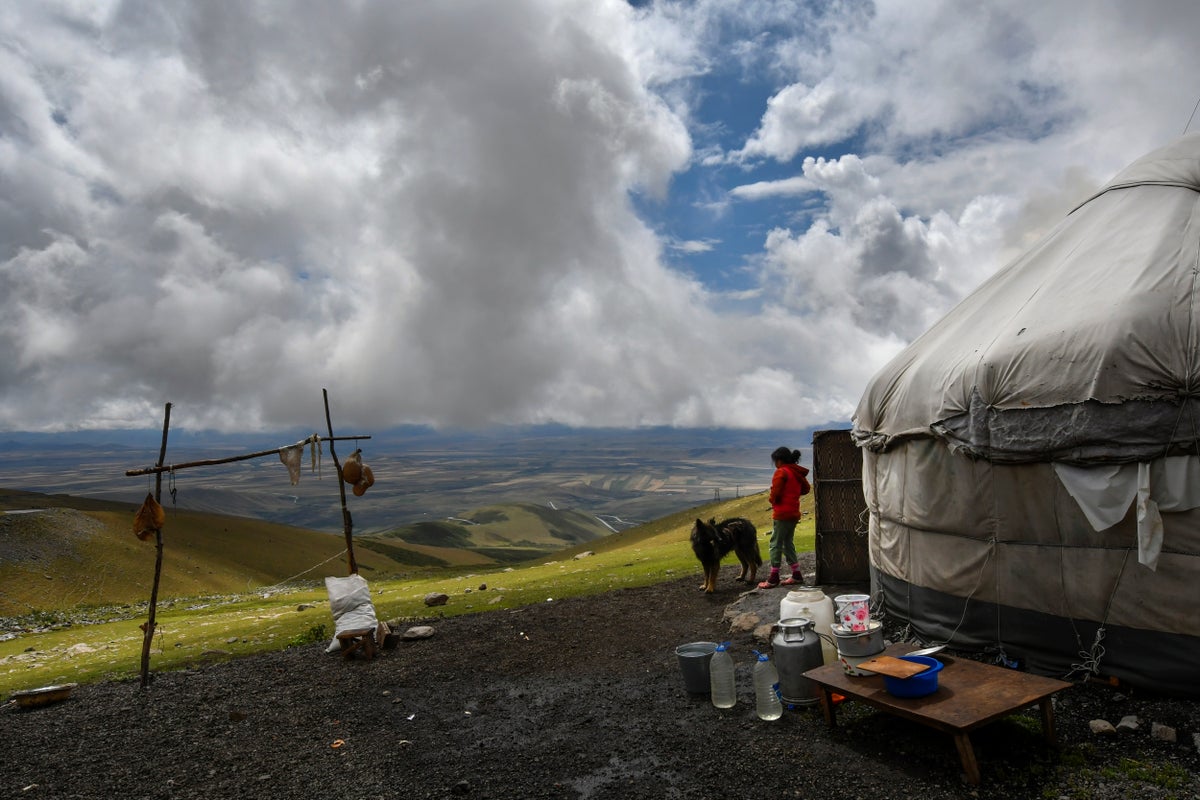
High up in the Tian Shan mountains of Kyrgyzstan, the season for making the fermented drink known as kumis is in full swing.
Connoisseurs of kumis, an important part of nomadic tribes’ diets for untold centuries, say the Suusamyr valley is home to the best version of the drink.
In winter, the valley, which is 2,500 meters (8,200 feet) above sea level, is covered in meters-deep snow. When the thaw comes, the abundance of water feeds dense grass and herbs. By the end of summer, the valley is awash in a thick, emerald carpet of juicy blades of grass that horses eagerly devour.
The grass and herbs lend a particular flavor to the milk that locals draw from the mares in the fields where they graze. The milk then is left to ferment, or sometimes churned to promote fermentation, until it becomes mildly alcoholic.
Cows’ milk can also be used, but it is regarded as inferior. Mares’ milk has a higher sugar content, making it more amenable to fermentation.
Rustam Tukhvatshin, a Kyrgyz medicines professor, says kumis promotes the growth of blood cells and detoxifies the body, among other benefits. He says he never misses coming to Suusamyr when kumis production is at its height.
Tourists and people from other parts of Kyrgyzstan also are taking notice of the region’s kumis. Large wood-framed tents known as yurts have been set up along the road with tables where kumis is sold. With time to spare, a buyer can relax in the yurts while drinking the highly regarded beverage.







